Posted on August 20th, 2018 by Mary Lord
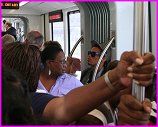 Students in grades 9 to 12 analyze real-world traffic data to evaluate the efficiency of a section of a public transit system and suggest design improvements. They then evaluate whether the changes make positive impacts on the system’s performance. Includes link to a California Academy of Sciences challenge on designing more energy-efficient, greener buses.
Students in grades 9 to 12 analyze real-world traffic data to evaluate the efficiency of a section of a public transit system and suggest design improvements. They then evaluate whether the changes make positive impacts on the system’s performance. Includes link to a California Academy of Sciences challenge on designing more energy-efficient, greener buses.
Read More
Filed under: Class Activities, Grades 9-12, K-12 Outreach Programs, Lesson Plans | Comments Off on Mass Transit Living Lab
Tags: Class Activities, data, FasTracks, Grades 9-12, graphs, Lesson Plan, mass transit, NGSS, route, Systems Engineering, traffic engineering, transportation engineering, urban planning
Posted on May 19th, 2014 by Mary Lord
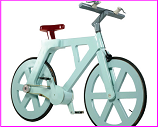 Izhar Gafni’s eureka moment came a few years ago when he heard about a cardboard canoe and wondered: “Why not a cardboard bicycle?” It took several years of trial-and-error work before he succeeded in building a reliable model that weighs a mere 20 pounds, is stronger than carbon fiber, and costs only about $10 to make.
Izhar Gafni’s eureka moment came a few years ago when he heard about a cardboard canoe and wondered: “Why not a cardboard bicycle?” It took several years of trial-and-error work before he succeeded in building a reliable model that weighs a mere 20 pounds, is stronger than carbon fiber, and costs only about $10 to make.
Read More
Filed under: Special Features | Comments Off on Cardboard Pedal Pusher
Tags: cardboard bicycle, entrepreneur, Green Technology, Ideas & Inventions, Materials Engineering, Sustainability, Systems Engineering, Transportation
Posted on March 25th, 2014 by Mary Lord
 In this delicious exercise, middle school students in teams of 3 to 5 learn about the field of industrial engineering by creating an assembly line to pack as many snack bags in 2 minutes as possible. They then see if they can improve their process.
In this delicious exercise, middle school students in teams of 3 to 5 learn about the field of industrial engineering by creating an assembly line to pack as many snack bags in 2 minutes as possible. They then see if they can improve their process.
Read More
Filed under: Class Activities, Grades 6-8, Grades 9-12 | Comments Off on Snack Bag Assembly
Tags: assembly line, Class Activities, cookies, Grades 6-8, Grades 9-12, Industrial engineering, industrial process, Lesson Plans, measurement, Northeastern University, snack, Systems Engineering, time motion studies
Posted on November 9th, 2012 by Mary Lord
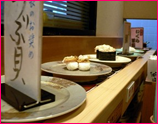 In this activity, teams of students in grades 3 to 12 explore how engineers work to solve such societal problems as moving goods, materials, and people by designing and building a conveyor system out of everyday materials than can transport pieces of candy 4 feet, including a 90-degree turn.
In this activity, teams of students in grades 3 to 12 explore how engineers work to solve such societal problems as moving goods, materials, and people by designing and building a conveyor system out of everyday materials than can transport pieces of candy 4 feet, including a 90-degree turn.
Read More
Filed under: Class Activities, Grades 6-8, Grades 9-12, Grades K-5 | Comments Off on Activity: Conveyor Engineering
Tags: baggage, conveyor, conveyor belt, Engineering, luggage, Manufacturing Engineering, suitcase, Systems Engineering, traffic, Transportation
Posted on October 25th, 2010 by ASEE
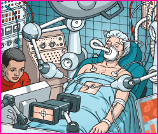 With their problem-solving techniques and technologies engineers are well-positioned to help render U.S. healthcare more efficient, effective, and affordable. And as new and different models are conceived, engineers can help design and support them, analyzing if and how well they are working.
With their problem-solving techniques and technologies engineers are well-positioned to help render U.S. healthcare more efficient, effective, and affordable. And as new and different models are conceived, engineers can help design and support them, analyzing if and how well they are working.
Read More
Filed under: Special Features | 1 Comment »
Tags: Computer Engineering, Computer Programming, games, Healthcare, Systems Engineering
Posted on August 2nd, 2010 by ASEE
 When the iPhone first came out in June 2007, some people bought one just so they could take it apart, examining the components, how the devices were assembled, and the design choices Apple made. These curious gadget freaks were engaging in reverse engineering, a practice instructors are now bringing into the classroom. By dismantling simple machines like bicycles, power tools and toys, students get hands-on experience that helps them design products of their own.
When the iPhone first came out in June 2007, some people bought one just so they could take it apart, examining the components, how the devices were assembled, and the design choices Apple made. These curious gadget freaks were engaging in reverse engineering, a practice instructors are now bringing into the classroom. By dismantling simple machines like bicycles, power tools and toys, students get hands-on experience that helps them design products of their own.
Read More
Filed under: Special Features | Comments Off on Feature: Some Disassembly Required
Tags: Reverse Engineering, Systems Engineering
Posted on August 2nd, 2010 by ASEE
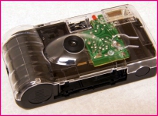 Students in grades 6-12 disassemble one of two different single-use cameras and create a systems diagram and precise reassembly instructions for the device. They then attempt to rebuild the other camera using instructions developed by their peers. Through this reverse engineering activity, students learn about the work of systems engineers.
Students in grades 6-12 disassemble one of two different single-use cameras and create a systems diagram and precise reassembly instructions for the device. They then attempt to rebuild the other camera using instructions developed by their peers. Through this reverse engineering activity, students learn about the work of systems engineers.
Read More
Filed under: Grades 6-8, Grades 9-12, Lesson Plans | 3 Comments »
Tags: Electrical Engineering, Ethics in engineering, Mechanical engineering, Reverse Engineering, Systems Engineering
Posted on August 1st, 2010 by ASEE

The Center for Innovation in Engineering and Science Education sponsors and designs interdisciplinary projects that teachers can use to enhance their curriculum through compelling use of the Internet. CIESE focuses on projects that utilize real time data available from the Internet, and collaborative projects that utilize the Internet’s potential to reach peers and experts around the worldm as well as a list of online resources. Each project has a brief description and links to the National Science Standards and NCTM math standards it supports.
Read More
Filed under: Web Resources | Comments Off on Web Resource: K-12 Engineering Projects from Stevens Institute of Tech
Tags: Earthquake materials, Lesson Plans, Systems Engineering, Web Resources
 Students in grades 9 to 12 analyze real-world traffic data to evaluate the efficiency of a section of a public transit system and suggest design improvements. They then evaluate whether the changes make positive impacts on the system’s performance. Includes link to a California Academy of Sciences challenge on designing more energy-efficient, greener buses.
Students in grades 9 to 12 analyze real-world traffic data to evaluate the efficiency of a section of a public transit system and suggest design improvements. They then evaluate whether the changes make positive impacts on the system’s performance. Includes link to a California Academy of Sciences challenge on designing more energy-efficient, greener buses.








 Izhar Gafni’s eureka moment came a few years ago when he heard about a cardboard canoe and wondered: “Why not a cardboard bicycle?” It took several years of trial-and-error work before he succeeded in building a reliable model that weighs a mere 20 pounds, is stronger than carbon fiber, and costs only about $10 to make.
Izhar Gafni’s eureka moment came a few years ago when he heard about a cardboard canoe and wondered: “Why not a cardboard bicycle?” It took several years of trial-and-error work before he succeeded in building a reliable model that weighs a mere 20 pounds, is stronger than carbon fiber, and costs only about $10 to make. In this delicious exercise, middle school students in teams of 3 to 5 learn about the field of industrial engineering by creating an assembly line to pack as many snack bags in 2 minutes as possible. They then see if they can improve their process.
In this delicious exercise, middle school students in teams of 3 to 5 learn about the field of industrial engineering by creating an assembly line to pack as many snack bags in 2 minutes as possible. They then see if they can improve their process. In this activity, teams of students in grades 3 to 12 explore how engineers work to solve such societal problems as moving goods, materials, and people by designing and building a conveyor system out of everyday materials than can transport pieces of candy 4 feet, including a 90-degree turn.
In this activity, teams of students in grades 3 to 12 explore how engineers work to solve such societal problems as moving goods, materials, and people by designing and building a conveyor system out of everyday materials than can transport pieces of candy 4 feet, including a 90-degree turn.  With their problem-solving techniques and technologies engineers are well-positioned to help render U.S. healthcare more efficient, effective, and affordable. And as new and different models are conceived, engineers can help design and support them, analyzing if and how well they are working.
With their problem-solving techniques and technologies engineers are well-positioned to help render U.S. healthcare more efficient, effective, and affordable. And as new and different models are conceived, engineers can help design and support them, analyzing if and how well they are working. When the iPhone first came out in June 2007, some people bought one just so they could take it apart, examining the components, how the devices were assembled, and the design choices Apple made. These curious gadget freaks were engaging in reverse engineering, a practice instructors are now bringing into the classroom. By dismantling simple machines like bicycles, power tools and toys, students get hands-on experience that helps them design products of their own.
When the iPhone first came out in June 2007, some people bought one just so they could take it apart, examining the components, how the devices were assembled, and the design choices Apple made. These curious gadget freaks were engaging in reverse engineering, a practice instructors are now bringing into the classroom. By dismantling simple machines like bicycles, power tools and toys, students get hands-on experience that helps them design products of their own. Students in grades 6-12 disassemble one of two different single-use cameras and create a systems diagram and precise reassembly instructions for the device. They then attempt to rebuild the other camera using instructions developed by their peers. Through this reverse engineering activity, students learn about the work of systems engineers.
Students in grades 6-12 disassemble one of two different single-use cameras and create a systems diagram and precise reassembly instructions for the device. They then attempt to rebuild the other camera using instructions developed by their peers. Through this reverse engineering activity, students learn about the work of systems engineers.